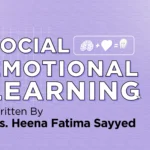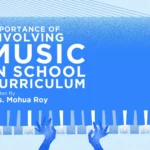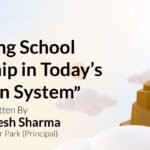The rampant use of technology in education has ushered in the era of digital learning in every country across the globe. The education world in fact was slowly evolving into a paperless environment however the pandemic pushed us into digital learning faster than we anticipated. Within a short time schools across the world had to switch to digital platforms for delivering lessons. Teachers had to be trained to handle the online classroom, and work on methods of class control unknown to them too! The pen and paper test was redundant. The entire teaching community was at the chasm of the Digital Divide.
Education moved out of the four walls of the classroom to the screen. Rethinking pedagogy was the need of the hour nevertheless the resilience shown by the teaching community was remarkable. Armed with the technology aided by Google, Microsoft and many more the teaching community rejuvenated the pulse of classroom learning through digital classrooms. Though not perfect the enthusiasm and receptivity of the teaching and learning community kept the classroom culture alive for quite some time but the challenges faced by the teachers never ceased.
Student management, Parent management, Time management, Technology management and School Management were the challenges faced by the teachers. Once the novelty wore off the online platform held no interest to the learners, and they missed the direct contact with the teacher; the social isolation actually dampened the spirit of learning among the children. Among the adolescent learners aged above the scenario is quite different. They got the space they craved, locked in a room undisturbed with their gadgets was a haven for them, it was their space and time to choose to learn. The asynchronous learning through recorded lectures, window period tests and ready access to search engines delighted these adolescent learners.
Incorporating online education with the regular system may seem challenging as almost 30% of the people in India are not yet techno friendly. Unaffordability is still a matter of concern in a family where there is a single earning member. Though theory classes can be comfortably conducted in the online mode the practical classes have faced a major setback. Online assessments are still not very reliable as it is difficult to curb any sort of malpractice. In many places even if the gadgets are available the connectivity is poor. The online platform faces many hurdles in regularization due to these reasons.
The National Educational Policy of 2020 is hoping to keep alive the digital learning platforms along with the live schooling experiences.
• Students will also be given the choice of multiple exits within this period. The government will establish an Academic Bank of Credit for digitally storing academic credits earned from different Higher Educational Institutions so that these can be transferred and counted towards the final degree earned.
• National Educational Alliance for Technology (NEAT) a regulatory body will be created to use technology for better learning outcomes. According to a learner’s requirement, NEAT aims to use artificial intelligence to make learning more personalized and customized.
• The proposal to set up a national assessment center, the PARAKH (Performance Assessment, Review, and Analysis of Knowledge for Holistic Development) is to keep a regular check on the education system.
Even after the pandemic has rolled over online assignments, online notes, and online guidance lectures have stayed back in the form of blended learning experiences. Digital learning still trends on the chart!











